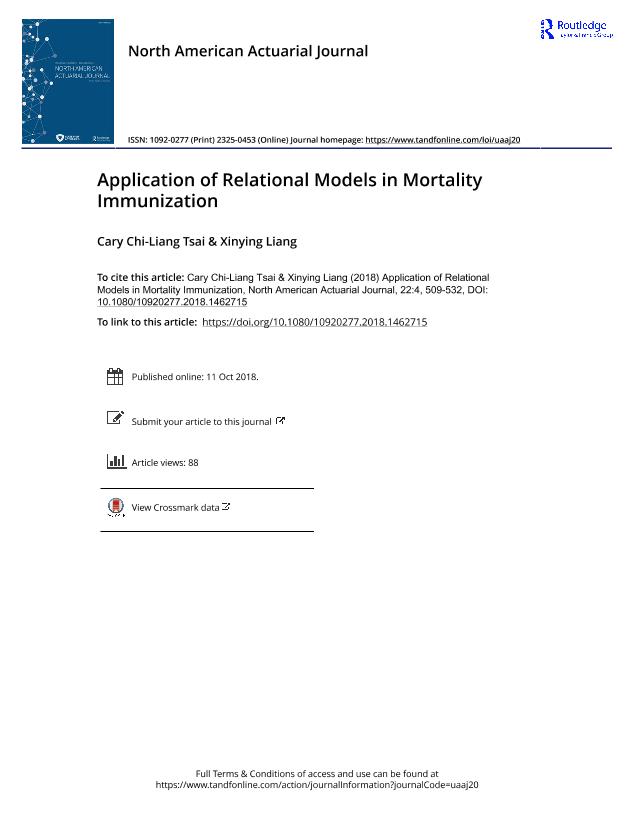Application of relational models in mortality immunization

Contenido multimedia no disponible por derechos de autor o por acceso restringido. Contacte con la institución para más información.
| Tag | 1 | 2 | Valor |
|---|---|---|---|
| LDR | 00000cab a2200000 4500 | ||
| 001 | MAP20190014144 | ||
| 003 | MAP | ||
| 005 | 20190520165433.0 | ||
| 008 | 190517e20181203esp|||p |0|||b|spa d | ||
| 040 | $aMAP$bspa$dMAP | ||
| 084 | $a6 | ||
| 100 | 1 | $0MAPA20150010858$aChi-Liang Tsai, Cary | |
| 245 | 1 | 0 | $aApplication of relational models in mortality immunization$cCary Chi-Liang Tsai |
| 520 | $aThe prediction of future mortality rates by any existing mortality models is hardly exact, which causes an exposure to mortality (longevity) risk for life insurers (annuity providers). Since a change in mortality rates has opposite impacts on the surpluses of life insurance and annuity, hedging strategies of mortality and longevity risks can be implemented by creating an insurance portfolio of both life insurance and annuity products. In this article, we apply relational models to capture the mortality movements by assuming that the realized mortality sequence is a proportional change and/or a constant shift of the expected one, and the size of the changes varies in the length of the sequences. Then we create a variety of non-size-free matching strategies to determine the weights of life insurance and annuity products in an insurance portfolio for mortality immunization, where the weights depend on the sizes of the proportional and/or constant changes. Comparing the hedging performances of four non-size-free matching strategies with corresponding size-free ones proposed by Lin and Tsai, we demonstrate with simulation illustrations that the non-size-free matching strategies can hedge against mortality and longevity risks more effectively than the size-free ones | ||
| 650 | 4 | $0MAPA20080579258$aCálculo actuarial | |
| 650 | 4 | $0MAPA20080555306$aMortalidad | |
| 650 | 4 | $0MAPA20080555016$aLongevidad | |
| 650 | 4 | $0MAPA20080592011$aModelos actuariales | |
| 773 | 0 | $wMAP20077000239$tNorth American actuarial journal$dSchaumburg : Society of Actuaries, 1997-$x1092-0277$g03/12/2018 Tomo 22 Número 4 - 2018 , p. 509-532 |

